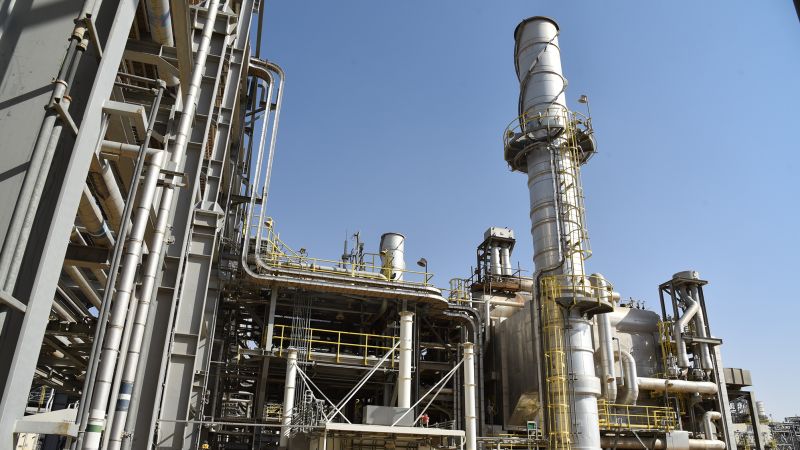Washington, DC
CNN
—
A surprise production cut announcement this week from Saudi Arabia and several other OPEC+ oil producers complicates the Federal Reserve’s mission to cool the economy and could worsen inflation in the United States, economists say.
Energy prices across the globe surged last year when Russia invaded Ukraine, fueling global inflation just as the world’s major economies were beginning to rebalance after the pandemic.
Since then, a drop in energy prices has helped cool US inflation, which has fallen from a 40-year peak of 9.1% in June to 6% in February, year over year, according to the Consumer Price Index.
Energy prices, which make up around 7.5% of the overall index, were up 5% in February from the same month a year ago, well below the 41.3% rise last June, according to the Bureau of Labor Statistics.
Now, with oil prices surging once again, headline inflation could remain elevated for longer or even rise. And Americans are already paying more at the pump — the national per-gallon average stood at $3.55 on Thursday, according to AAA, up from $3.40 a month ago.
While Fed officials consider multiple economic metrics in order to inform their decision making, one of their main points of focus is core inflation, which strips out volatile food and energy prices. However, higher oil prices can eventually push up core prices if they remain elevated for long enough.
“The Fed sees OPEC decisions as mostly geopolitical, but they can impact production of goods and the transportation of other items, so those higher oil prices can bleed into that core component, which the Fed does tend to focus on a little bit more in terms of setting policy,” Sarah House, senior economist at Wells Fargo, told CNN.
Plastic resin, for example, is a derivative of crude oil used to create everyday items such as bottles, wires, and clothes. The cost of jet fuel closely influences airfare prices.
Higher energy costs soften overall demand by weighing on consumer sentiment and consumer spending, both of which were surprisingly robust at the beginning of the year but have recently started to cool.
Consumer sentiment tracked by the University of Michigan fell to its lowest point on record last June when gas prices reached $5 a gallon. It has since improved with the decline of gasoline prices.
“Energy prices are a very powerful factor in people’s expectations of inflation, but right now, they’re not having that hold on consumer psychology yet,” said Carl Tannenbaum, chief economist at Northern Trust Corporation.
“If the price of a gallon of regular gasoline goes above $4, then that’s a different story,” he said.
But weaker consumer spending could be a mixed bag in terms of inflation, said John Leer, chief economist at data analytics firm Morning Consult. While it can reduce inflationary pressure for service-providing businesses, it can also increase the odds of the United States going into a recession.
“If consumers are allocating a greater share of their wallet to energy expenses, that’s going to limit their ability to spend money elsewhere, so on a real basis, you would see demand contract that way,” Leer said.
Ultimately, the volatility of oil prices mean they are just too difficult to track, said James Bullard, president of the Federal Reserve Bank of St. Louis, in an interview with Bloomberg. However, he acknowledged the eventual impact of higher prices.
“Some of that might feed into inflation and make our job a little bit more difficult,” he said.







More News
Opinion | Trump Didn’t Really Do That Well in Pennsylvania
The Next Winner of the World Chess Championship Could Be the Youngest Ever
McKinsey Is Under Criminal Investigation for Its Opioid Work